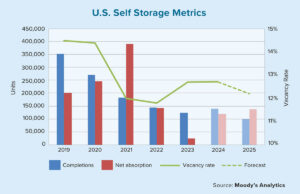Fannie Mae originally forecast that the Federal Reserve would increase interest rates twice this year, once this month and again in September. Now, Doug Duncan, Fannie Mae’s chief economist, expects a single rate increase in June. That would give the Fed a chance to determine if a second hike is merited.
The Fed needs to boost rates before possibly lowering them as “more ammunition in the event the next recession comes,” Duncan said.
“By this fall, this will be the longest economic expansion we have ever had. This doesn’t mean just because it is long, it dies, but they all have at some point ended.”
Duncan spoke with Scotsman Guide about the Fed outlook, last year’s tax overhaul and potential threats to the U.S. economy.
Why have you said that the economic boost from last year’s tax overhaul has waned?
You get that initial burst from the change, and after that you have adjusted your consumption and investment behavior to a new level. And so, it may be at a different run rate, but the initial impulse gives a burst of growth.
Since people are now filing their taxes, shouldn’t this be the year when it would have its greatest impact?
On the housing front, you have seen the limitation on deductions of state and local taxes. … I think there will be a response in the housing markets where state and local taxes are very high. At the high end of the market, I think you will see a response, but it will be a localized response, more so than a general housing-market response, and it will occur at the top end of the house-price spectrum.
Will this be a positive or negative impact?
Negative. They haven’t filed their taxes yet. So, when they file their taxes and find out their deductions fell and their income [filing] will go up significantly, then I think you will see a response. Again, it is in localized markets in states with high state and local taxes, and in sectors where there are high house prices.
What is the biggest threat to the economy this year?
There are probably two or three things to think about. One is, of course, the discussion of tariffs. That would have some impact on slowing growth. It is probably not as big as people think. There is some concern about the level of debt in the corporate sector, the nonfinancial corporate sector and whether or not a rise in interest rates in that space could trigger some failures among some of those firms that have taken on debt and kept themselves going when interest rates were very low. If they have to [refinance] at a higher interest rate, whether they can survive that, that would be another risk.
Of course, we have seen the response of the Fed and the volatility in the market. The Fed is slowing down, not just because of that market volatility but also because, clearly, the growth around the globe is slowing.
Do you have any concerns about how the recent stock-market volatility can affect the economy?
There are some folks whose consumption is conditioned on the value of their stock-market portfolio. It may not be enough to actually move the needle on the consumption portion of economic activity. It does, to some degree, impact confidence because, while the vast majority of households don’t actively trade, they also have retirement plans, 401(k)s and things like that, which are investments in the stock market. It does impact what they think about [and] what they might have available when they go into retirement. … From that perspective, if consumers become much less confident about employment, that kind of thing, then consumption falls and growth will slow.
Given that you think rates will be flat and for-sale home inventories appear to be increasing, do you think home sales will perk up in the spring?
Our view is that home sales in 2019 are likely to look a lot like home sales in 2018, which was down from 2017. In terms of this cycle, we think that the peak in both sales and price appreciation will be revealed to have been in 2017. In 2019, we see slower price appreciation to maybe 4 percent, down from 5 ½ or thereabouts. Still positive, but slower.





